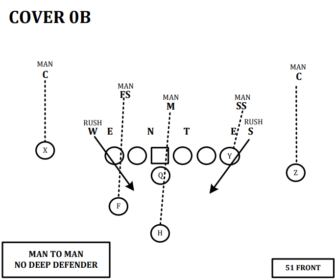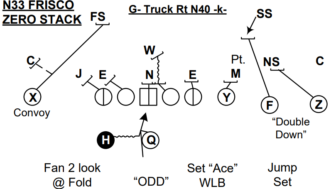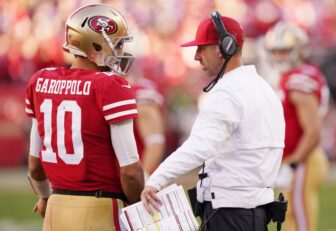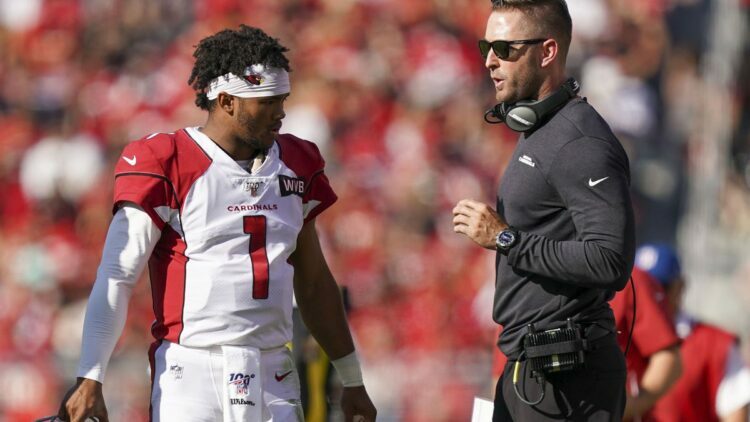
Arizona and Kliff Kingsbury have two impressive wins to start the season. Kyler Murray looks like he could be an MVP candidate, the defense is generating pass rush, and all is good in the world. Except, there’s some concerning trends cropping up for the Cardinals on offense.
The Air Raid scheme
Kliff Kingsbury’s Air Raid scheme originally based out of 10 personnel with one running back and four receivers. When Kingsbury started out, he was using 10 personnel almost 60% of the time. Air Raid uses that personnel grouping to create tempo and to stress defenses with speed outside. However, Kingsbury quickly found out he needed to adjust and in the rest of his first year, he ran 10 personnel just 18% of the time.
Along with the use of 10 personnel, tempo is huge for Air Raid teams. As a consequence, that means keeping things relatively static for the players outside. That results less motion, shifts, and movement from receivers. Players know where to line up after every play and therefore can get set much more quickly. In 2020, Arizona ranked dead last in pre-snap motion. Additionally, their stud receiver DeAndre Hopkins lined up outside on the left on 88.3% of his snaps last year.
That isn’t to say that any of that is bad, though. The Cardinals are still able to produce. Some things Kliff Kingsbury does really well. However, there are definitely areas where he can more cleanly match his system to what his players can do. Kyler Murray is a dynamic and talented quarterback, but I don’t see cohesion between coaching scheme and player skillset on a consistent basis.
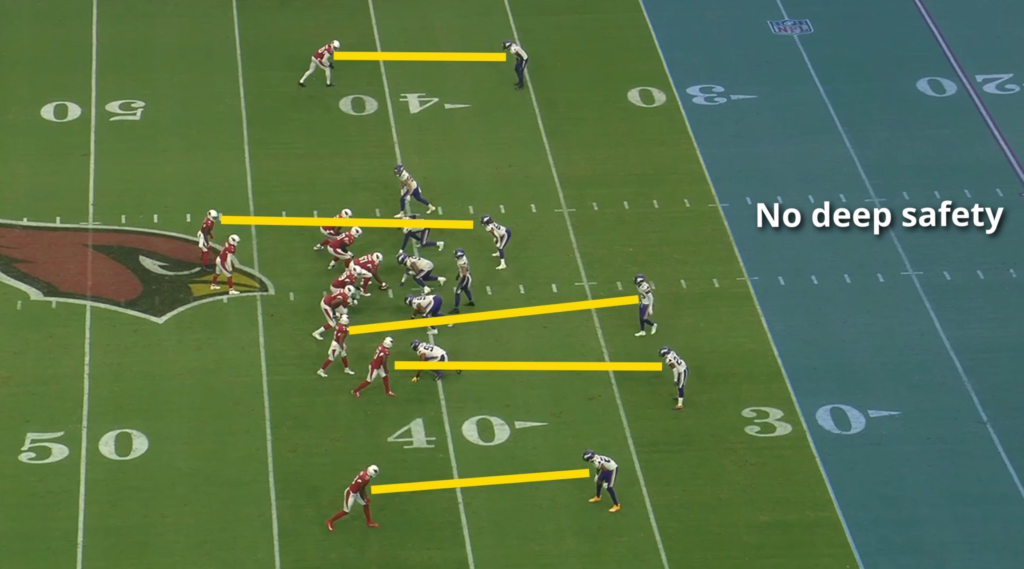
Kyler Murray is incredibly talented. He has already shown some significant growth in year three by diagnosing blitzes and changing plays at the line of scrimmage. A couple times already this year, he’s seen Cover 0 looks and created big gains off of them. Against the Vikings, Murray sees no deep safety help and all defensive backs capping over the top of his receivers. That indicates that the Vikings are bringing seven guys on the blitz. They are using one of their favorite double A-gap looks. Murray recognizes this and gives Christian Kirk a chance on a deep post in the middle of the field to burn the Vikings for a huge gain.
Cover 0
Murray has already thrown some absolute dimes this year. He has fit the ball into tight windows, had fantastic ball placement, and single handedly put the offense on his back at times – both with his arm and his legs.
Use of empty formations
The Cardinals and Kliff Kingsbury have been particularly tough to defend out of empty sets. With DeAndre Hopkins, Christian Kirk, Rondale Moore, and AJ Green split out wide and then the threat of Murray in the run game, defenses are spread incredibly thin. The Titans chose to combat those empty sets with Cover 0 to force Murray to get the ball out fast. While he does indeed have to get the ball out, that leaves every receiver with a one-on-one. Murray hits Hopkins on a quick slant in the open field who is then able to beat Kevin Byard and get in for the touchdown.
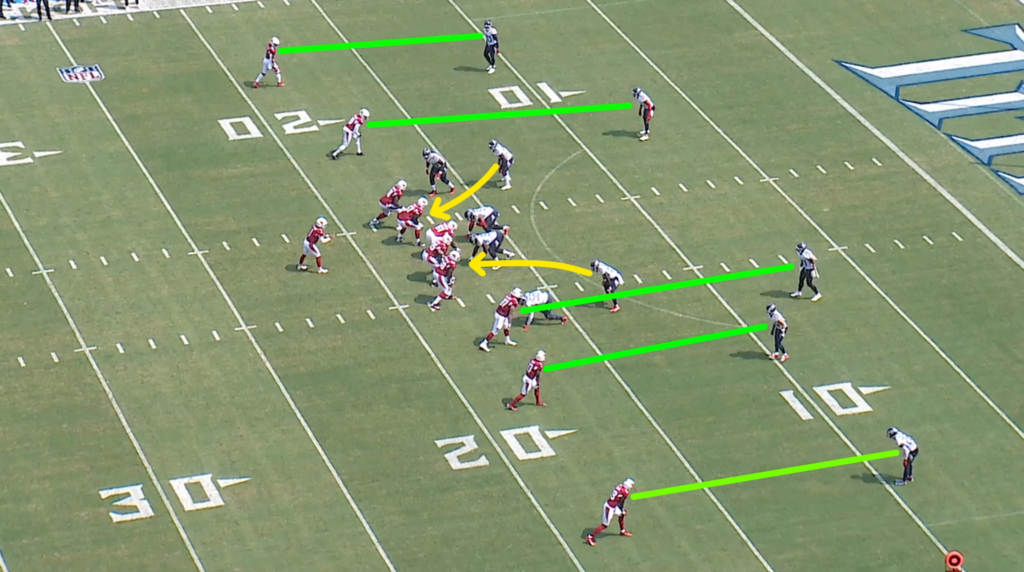
When Arizona gets teams spread out like that, they also love to run a quarterback draw with Kyler Murray. Murray in the open field working on a safety or a guy at depth is almost an impossible task for the defense when they also have to cover five receivers.
Draw
Kliff Kingsbury and the Air Raid offense also love to use the running back in the passing game. They very rarely leave them in on pass protection. Instead, Kingsbury uses the back to create what are essentially quads and empty formations with speed releases to overload one side of the defense.
Murray’s issues in the pocket
While the Air Raid generally does a great job of getting the ball out of the quarterback’s hands early, Kingsbury has started to lean much more heavily on curl routes and longer developing plays. That’s a problem for Murray, who, while incredibly explosive and creative outside the pocket, does have a tendency to bail from clean pockets and get out of rhythm very easily. He may still make things happen on scramble drills or take off himself, but the structure of those longer-developing plays don’t fit his play style. As soon as pressure shows itself or gets in his face, he quite literally can’t see the field and gets out of the pocket so that he can.
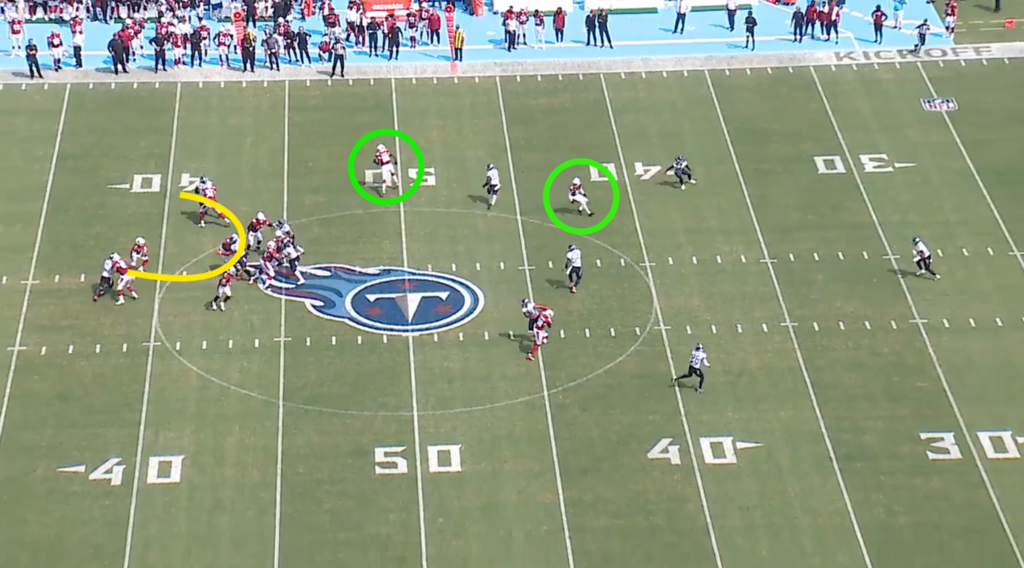
Off of the play fake here, Murray has his two primary reads open on rhythm. He can hit the curl as it’s coming out of its break, or the flat route that has out-leveraged the chasing linebacker. Instead, Murray feels pressure and immediately looks to escape. The pocket is clean to step up into and deliver a throw, but Murray instead takes off.
Again, Murray has been transcendent outside the pocket and is playing at a very high level right now. However, the lack of rhythm on longer developing plays has to be a concern for the Arizona offense. Without it, it will be tough to their current level of production.
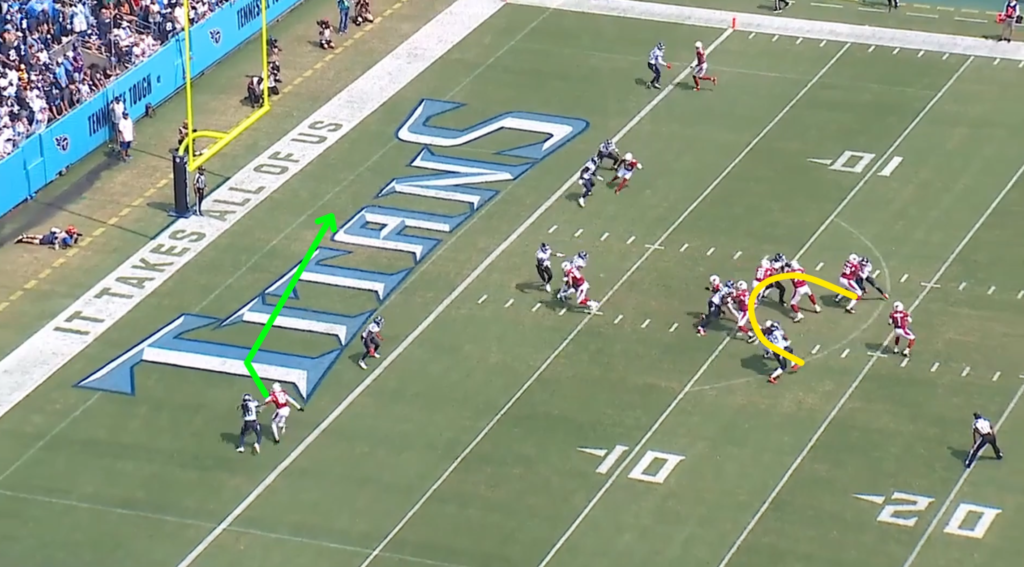
Murray has a picture-perfect pocket here, but once again chooses to scramble. If he had instead climbed the pocket, this is a much easier throw to DeAndre Hopkins. Instead, it takes a great throw on the run for the touchdown.
That has been a recurring issue for most of his career and has continued this year. That’s equally at the feet of Kliff Kingsbury and Kyler Murray.
The need for rollouts and boot action
If you have a quarterback that wants to get outside the pocket and is a dynamic runner, the easiest solution to that is to create designed rollouts. That helps the run game, uses different personnel, and gets your quarterback on the edge of the defense where he has a clearer view of the field. Yet, Kingsbury uses play-action only 20% of the time and boots Murray outside the pocket even less than that. That’s a problem when Murray simply can’t see wide open receivers – regardless of how well they may or may not be schemed up.
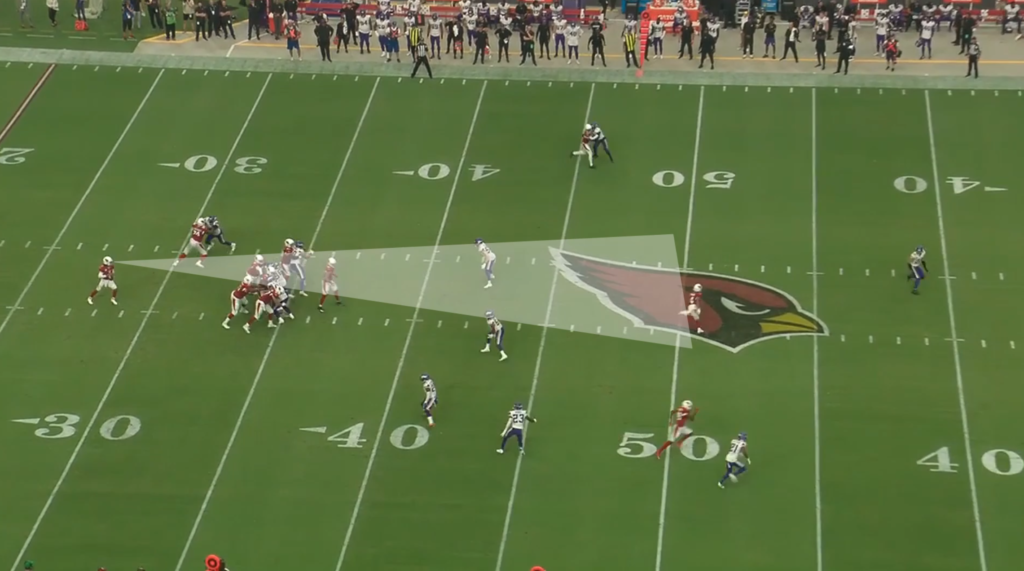
Kyle Shanahan’s Play-Action Scheme
Here, off of play action, Kliff Kingsbury is running Y-Cross with Rondale Moore who is wide open. Murray is looking that way, but flat out can’t see him and ends up checking the ball down.
Personnel usage
While the Cardinals have used more varied personnel as Kingsbury has spent longer in the NFL, the missing piece is tying the offense to what Kyler Murray does best.
You don’t necessarily have to be under center, but you do need formational diversity and you do need to move your receivers around to create matchups and looks. Instead, Kingsbury gets too predictable. When he lines up with heavy personnel, he almost always runs. Hopkins is still almost always on the left side of the formation, and it allows defenses to more easily scheme up ways to stop the Cardinals when they’re within structure.
Using Rondale Moore
A bright spot, though, is that Rondale Moore’s skill set has almost forced Kingsbury to start using more pre-snap motion and movement. That helps pull eyes and create opportunities not just for Moore, but for other receivers. Moore is incredibly dynamic and they’re targeting him 25% of the time that he’s in, but that’s mostly on quick screens or on broken plays. There’s just a lack of continuity in Kingsbury’s system and some meat left on the bone with the talent that Arizona has.
Final Thoughts
Kliff Kingsbury is evolving, but he’s evolving slowly and still isn’t designing things around Kyler Murray. They use zone reads and use him as a runner, but so far this year, an awful lot of the Arizona offense is produced via scramble drill and insane throws by Murray. I wouldn’t say Kingsbury’s scheme is inspired, but it’s also not bad. There have been some cool run designs and backfield action – something he wasn’t doing as much early on. There’s also been the routine running of deep curls and excessive throws behind the line of scrimmage. If Kingsbury can more cleanly mesh his Air Raid principles to what Murray does best, the talent is there for Arizona and big things could be on the way.

